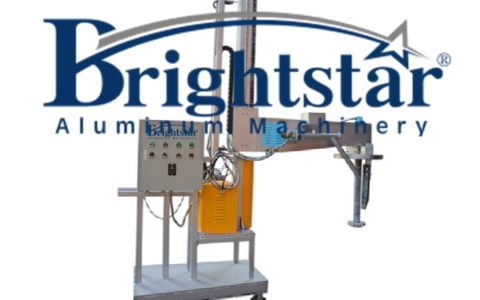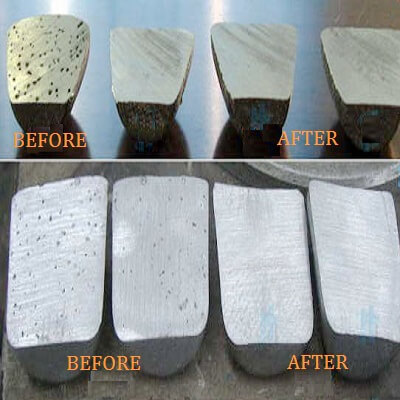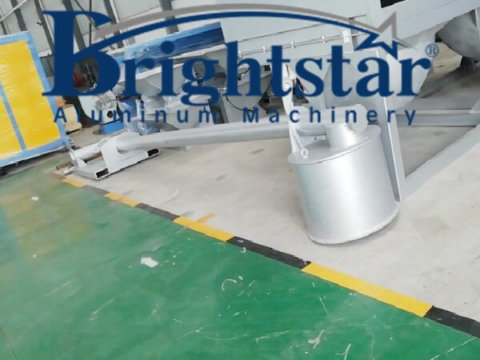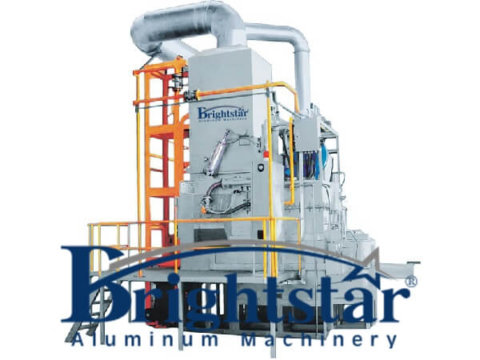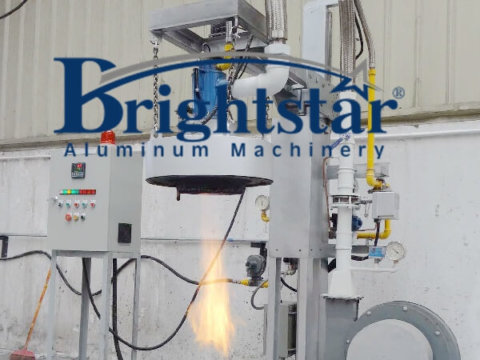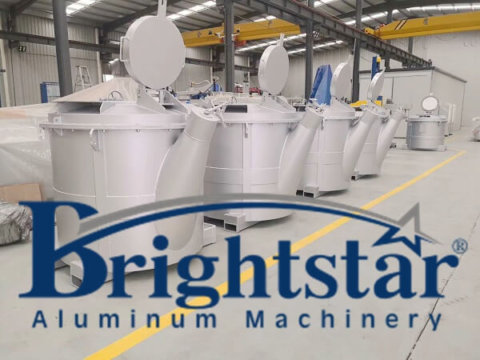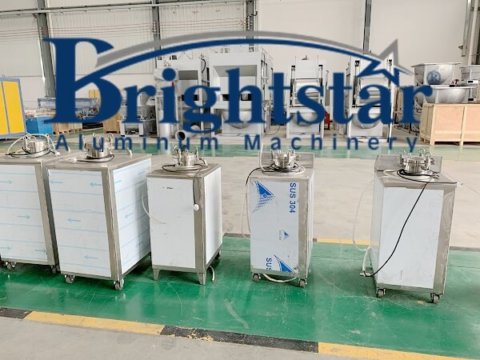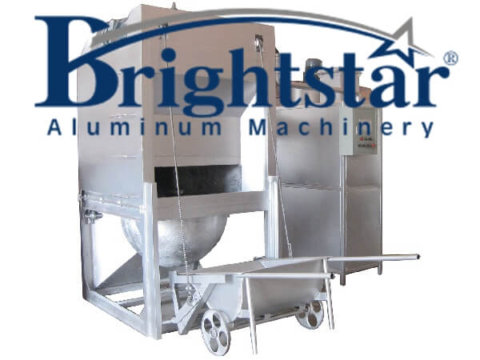
Molten aluminium degassing refining machine
Molten aluminium degassing refining machine
Molten aluminium degassing refining machine
A molten aluminum degassing refining machine plays a critical role in the aluminum production process by removing impurities and gases from molten aluminum, ensuring its purity, quality, and strength.
This equipment is commonly used in various industries, including:
Automotive: For manufacturing engine blocks, wheels, and other components.
Aerospace: For producing lightweight and high-strength aircraft parts.
Construction: For creating durable and corrosion-resistant building materials.
Electronics: For ensuring purity and conductivity in electrical components.
Application
Molten aluminium degassing refining machine can be used for crucible furnaces, pool-type melting furnaces, refractory melting furnaces, transfer ladles and other furnaces.
Primary aluminum production: Degassed aluminum is essential for producing high-purity ingots and billets for further processing.
Casting applications: Ensures high-quality molten aluminum for casting of automotive parts, building materials, and other products.
Recycling: Helps purify recycled aluminum for reuse in various applications.
Description of molten aluminium degassing refining machine
Mainly made up of the main machine frame, motor, graphite rotor, electric control box and refining agent tank.
The graphic rotor that is driven by the motor comes down to liquid aluminum and rotates into it, at the same time, high purity nitrogen (or Argon) and the refining agent will be introduced into it, then can get degassing, deslagging and refining function.
The machine can be movable, fixed and suspension type.
How It Works:
1. Molten aluminum is pumped into the degassing chamber.
2. Inert gas (typically nitrogen or argon) is injected into the molten aluminum through porous plugs or rotors.
3. The rising gas bubbles create agitation, drawing up impurities and trapped gases like hydrogen to the surface.
4. A skimming mechanism removes the dross (impurity layer) formed on the surface.
5. The degassed and refined aluminum is then transferred to the casting or holding furnace.
Key Features:
Vacuum degassing: Some machines utilize a vacuum system to further enhance gas removal and achieve even higher purity levels.
Fluxing systems: Certain models incorporate fluxing agents to promote slag formation and improve impurity separation.
Temperature control: Precise temperature control optimizes the degassing process and prevents solidification within the machine.
Automatic operation: Modern machines offer automated control systems for efficient and consistent operation.
Advantages:
Improved metal quality: Reduces impurities and gas content, leading to stronger, more corrosion-resistant, and weldable aluminum.
Enhanced product performance: Contributes to improved final product quality and performance in various applications.
Reduced production costs: Minimizes scrap rates and rejections due to impurities, optimizing material utilization.
Increased efficiency: Continuous degassing processes improve production throughput and reduce downtime.
Improved safety: Reduces the risk of explosions due to trapped gases in the molten aluminum.
Situation
As there are large amounts of hydrogen, metallic and non-metallic impurities in aluminum and aluminum alloy melting.
If these harmful impurities cannot be removed before casting, then they will cause blowholes, slag inclusion, shrinkage and other casting defects on the surface and inside of casting products, which seriously affect the casting’s physical, chemical, and mechanical performance and deep processing properties.
Working principle of molten aluminium degassing refining machine
The molten aluminium degassing refining machine uses argon or nitrogen as a refining medium, to remove hydrogen, impurities from motel aluminum, A graphic rotor is put into the molten aluminum, bringing refining gas into the molten aluminum through a high-speed rotation graphic rotor, small bubbles will be produced and evenly dispersed in molten aluminum after graphic rotor and liquid aluminium high-speed contact,
As the hydrogen partial pressure of the bubble is zero and molten aluminum hydrogen partial pressure is high, the hydrogen of liquid aluminum will spread into the bubble gradually, at the same time, liquid aluminum metallic and non-metallic impurity will be absorbed on the surface of the bubble.
The bubbles that carry the impurity float on the top, so as to remove the hydrogen and impurity from liquid aluminium.
Features of molten aluminium degassing refining machine
1. High efficiency for degassing, greatly reduces the NG products that blowhole, slag inclusion, and shrinkage cause. Improve the rate of finished products;
2. Environmental friendly, no pollution, use argon or nitrogen as the refining medium, can work with refining flux for better effect;
3. Reduce refining cost and labor strength;
4. No corrosion to the crucible furnaces and transfer ladles;
5. Minimize the secondary pollution in the processing procedure;
6. The main shaft of the machine adopts a high-temperature resistant bearing, and the motor with air cooling device, reduces the motor working temperature and extends the using life.
7. Set the emergency shutdown button, simple and safe operation, strong structure, less maintenance
8. The rotor rotating speed can be adjusted in real-time by a frequency converter, convenient for use in different degassing and refining situations
In conclusion, molten aluminum degassing refining machines are crucial equipment for achieving high-quality and impurity-free molten aluminum.
Their advantages in terms of metal quality, efficiency, and cost-saving translate to significant benefits for various industries relying on aluminum products.
Whether you’re in automotive, aerospace, construction, or any other aluminum-intensive industry, investing in a degassing refining machine can be a valuable step towards improving your production processes and ensuring the quality of your final products.
The Necessity of Molten Aluminum Degassing Refining Machines in Melting
Molten aluminum degassing refining machines are not inherently necessary in every aluminum melting process, but they become increasingly crucial as you prioritize the purity, quality, and performance of your final product.
Here’s a breakdown of the necessity of these machines in different scenarios:
When degassing is not essential:
Simple melting for non-critical applications: If you’re merely melting aluminum for basic applications like scrap recycling or low-quality castings where specific strength or conductivity requirements are not crucial, degassing might not be essential.
When degassing becomes important:
Manufacturing high-quality products: For applications demanding high strength, corrosion resistance, and weldability, such as automotive parts, aircraft components, and intricate castings, degassing becomes critical. Impurities and trapped gases can significantly compromise these properties.
Improving casting quality: Gas bubbles trapped in molten aluminum can lead to porosity and imperfections in the final casting, impacting both aesthetics and structural integrity. Degassed aluminum ensures smoother, denser castings.
Enhancing electrical conductivity: For applications like busbars and electrical components, even minute impurities can negatively impact conductivity. Degassed aluminum provides superior electrical performance.
Optimizing efficiency and reducing waste: Degassed aluminum has better fluidity and workability, leading to easier casting processes and reduced scrap rates.
Factors to consider:
Aluminum source: Degassed aluminum ingots and billets usually offer lower initial impurity levels compared to scrap aluminum, potentially reducing the need for degassing in the final melting stage.
Melting environment: Some melting furnace designs, like rotary furnaces, naturally incorporate agitation and promote gas release, potentially minimizing the need for separate degassing equipment.
Desired final product requirements: The specific strength, conductivity, and surface finish requirements of your final product will significantly influence the necessity of degassing.
Overall, a molten aluminum degassing refining machine is not a mandatory addition to every melting setup.
However, it becomes a vital tool for manufacturers prioritizing high-quality products, optimized performance, and efficient production for demanding applications.
